Creating a Facebook Custom Audience Deployment
In this tutorial, you’ll learn how to create and run a Facebook deployment.
Facebook channel deployments will enable you to push your Target Group data from Webex Campaign to Facebook Custom Audiences, which in turn can be used to target adverts to contacts across the Facebook ecosystem. You can add an unlimited number of records to Facebook Custom Audience, but only up to 10000 at a time.
Following are the Pre-requisites to creating a Facebook Campaign deployment:
If your username is assigned with an admin role, then you can complete all the steps to create a deployment. If your username is assigned with a role that has limited permissions, then you can create a deployment and send it for approval. Upon approval, the deployment can be activated.
- Access to Campaign management section
- A Campaign
- A Target Data for Facebook Channel
- A Purpose
- A P&L
- Work with your account team for a series of one-time steps to be done on the Facebook platform. The steps include: providing Webex Campaign access to your Facebook Ad Account. Read more about these steps on our Facebook help page.
- Add Facebook Ad Account Name and Ad Account ID in Webex Campaign at Campaign Management > Facebook Audiences> Facebook Ad Accounts.
For the Facebook channel, you can schedule One-Time and Recurring Parent Deployments and Follow-Ups. A/B Deployments are not supported for the Facebook channel for now.
You can also create Facebook channel Follow-ups to Email, SMS, or MMS parent deployments. This can be used to re-target SMS, MMS, and Email contacts by reaching them on the Facebook network.
Step 1: Create a Deployment
A deployment is a set of instructions to process a campaign under the parent campaign.
To create a deployment:
- Navigate to Campaign management > Campaign list screen and click on the campaign in which you want to create a deployment.

- Click Create deployment on the campaign summary screen that appears. The campaign summary screen will display the status of all the deployments of the campaign. For more information on creating a deployment, go to Creating a Deployment section.

- Select the deployment type as Promotion.
- Select the type of promotion as Simple promotion, mode of deployment as One time , and content type as API.
- Select the channel as Facebook Audience and click Create.

- The Deployment creation screen appears. You have to configure each node in the deployment creation screen.

The left panel will display different nodes that can be used to configure a node, The nodes are grouped based on their usage. On selecting a node the right panel will display the configuration options.
Step 2: Choose Your Recipients
In this step, the recipients of the campaign are selected. As mentioned in the prerequisites, a target group should already be uploaded to the Webex Campaign.
To select the recipients of the campaign:
- From the Target group source , drag-and-drop the Existing TG node onto the Target Group placeholder. We have chosen the Existing TG node because the target group is already uploaded as a prerequisite. For more information on adding a target group from different nodes, go to Target Group Source Nodes section.

- Select the Existing TG node and click + Add from the right panel.
- Select the target group that was uploaded.
- Click Save & proceed to close the target group screen.
- Click Save changes.
Now the recipients are successfully configured for the deployment.
Step 3: Create a Schedule
In this step, select a schedule to send your campaign immediately, or create a schedule (a date and a time) to run the deployment in the future. For this tutorial, we will run the deployment Immediately as soon as the deployment is activated.
To configure the schedule:
- Drag-and-drop the Immediately node onto the Schedule node.
- Select the Schedule node. From the right panel, click Save changes.
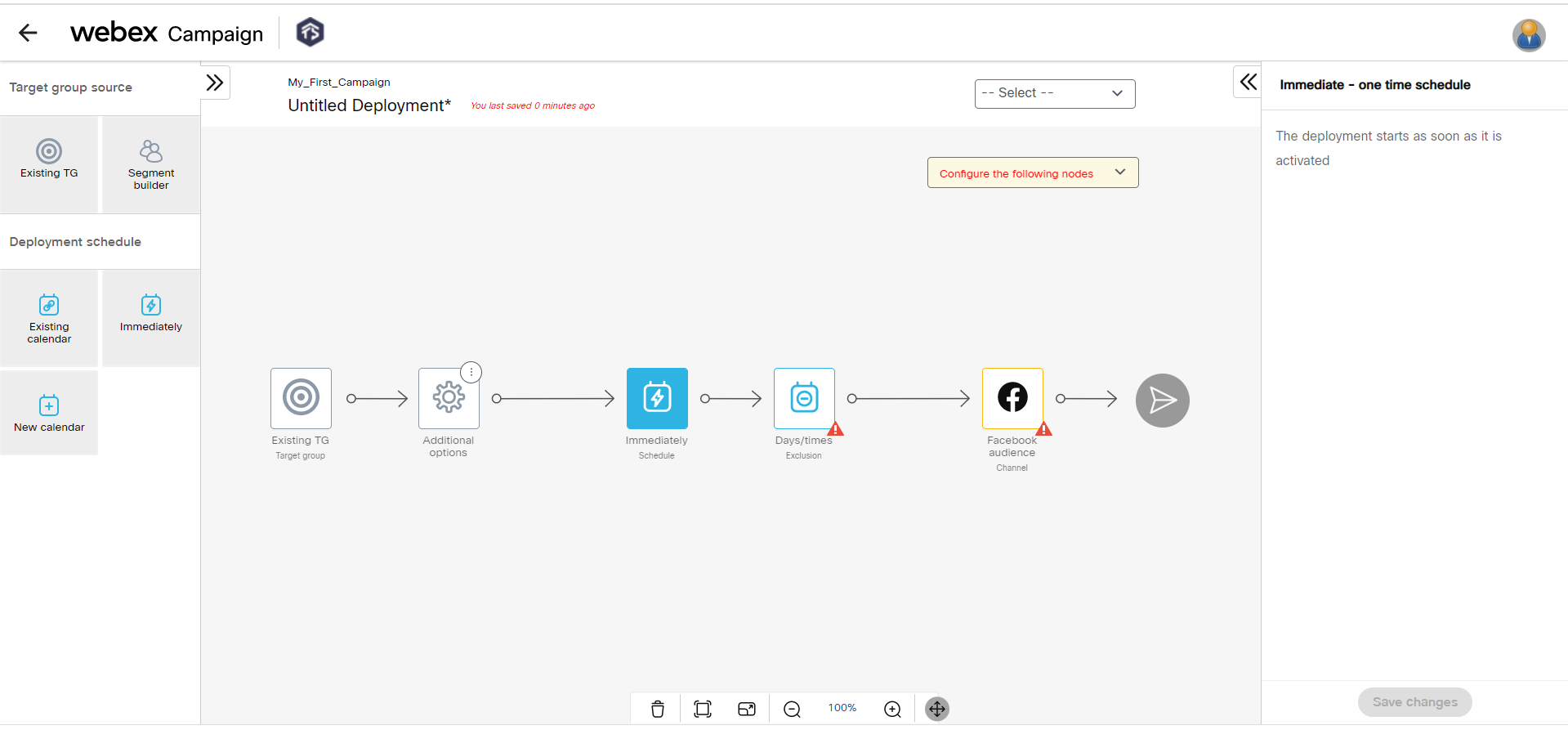
Step 4: Configure Exclusion Day/Times
During the exclusion day or time, the deployment is paused temporarily and resumes once the exclusion day or time has lapsed. The exclusion day or time is set by the administrator that is applicable to all campaigns across the tenant. To add a custom exclusion day or time, configure this node.
For more information on exclusion day or times, go to Exclusion days / times section.
For our tutorial, we will proceed with the default exclusion day or times. Select the Exclusion days/ times node and click Save changes.
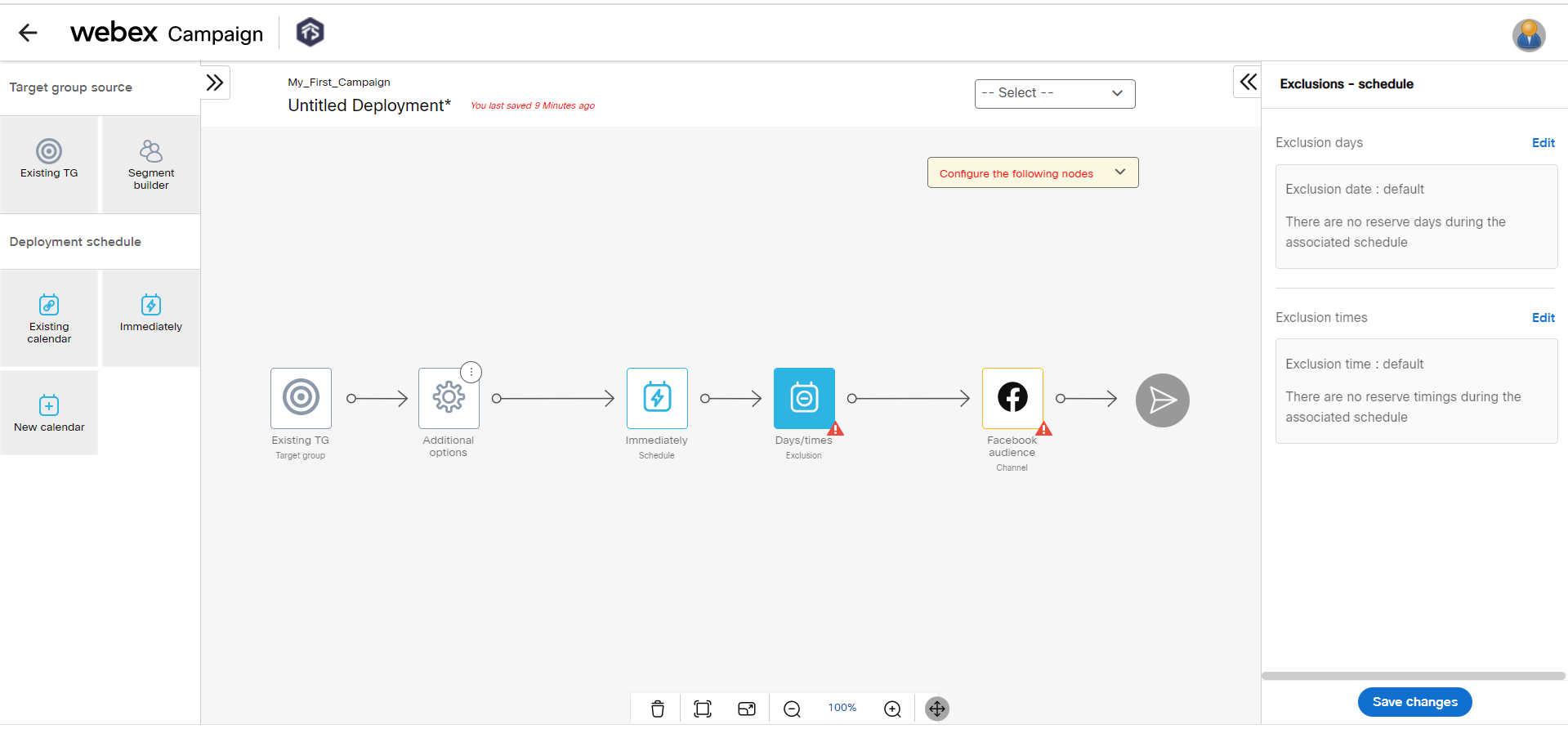
Now the schedule is successfully configured for the deployment.
Step 5: Configure Facebook Action and Parameters
In this step, configure the previously created external action and the parameters that need to be pushed to Facebook Audience.
To configure the Facebook node:
- Click + Add . The External action configuration screen appears.
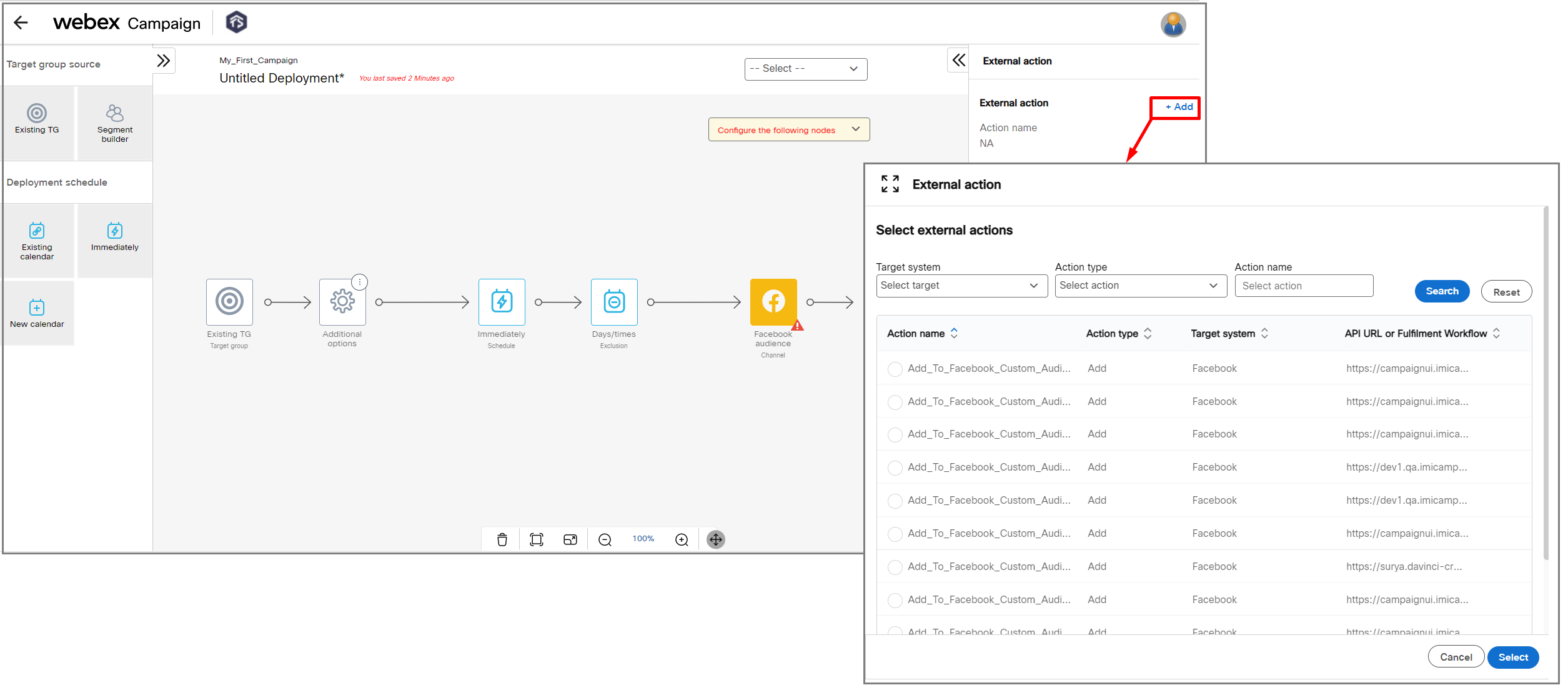
- Select the required action. You will need to select one of the pre-configured External Actions on the Deployment. Currently, the following two External Actions are pre-configured for the Facebook channel:
- Add_To_Facebook_Custom_Audience_With_Email
- Add_To_Facebook_Custom_Audience_With_Mobile_Number
These actions cannot be restricted to specific User Groups.
Please do not edit, update, or delete these pre-configured Ext Actions in your tenant; doing so will adversely impact your ability to execute Facebook Custom Audience Deployments.
-
Click Select..
-
The selected action will be displayed in the right panel. The next step is to configure the Parameters that you want to be the headers in Facebook Audience. Click +Add.
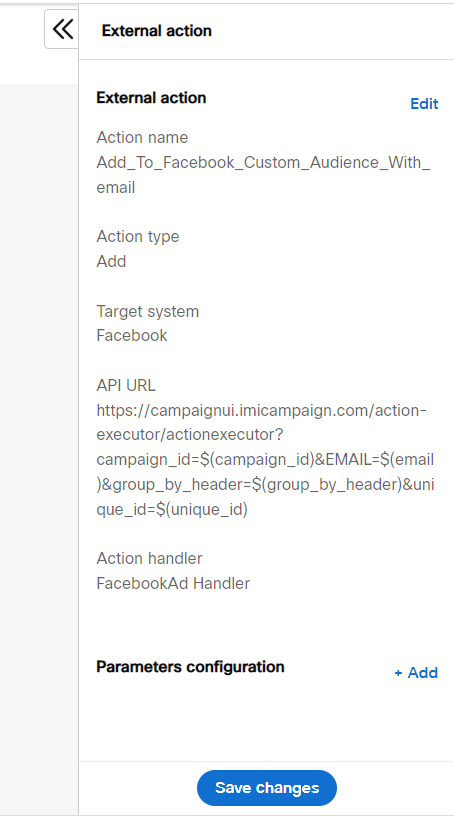
- The Configure Parameters screen appears. Click Edit and enter details for the following mandatory fields.
- CustAudience: Enter a name for the Facebook custom audience.
- CustInfoSource: Select the source of the target data.
- EMAIL: Select the Email from the drop-down.
- FBAccount Select the Facebook Account from the drop-down.

- Click Save.
- Click Save changes to save the node.
Now all the nodes are configured.
Step 6: Save the Deployment
In this step the deployment can be saved as a Draft or ready for Activation. The Deployment meta tags are mandatory to activate a deployment. If you are not sure of the Deployment meta tags that should be used, you can save the deployment and come back later to select the Deployment meta tags.
To save the deployment as ready for activation:
- Select Save & exit. The Save deployment screen appears.
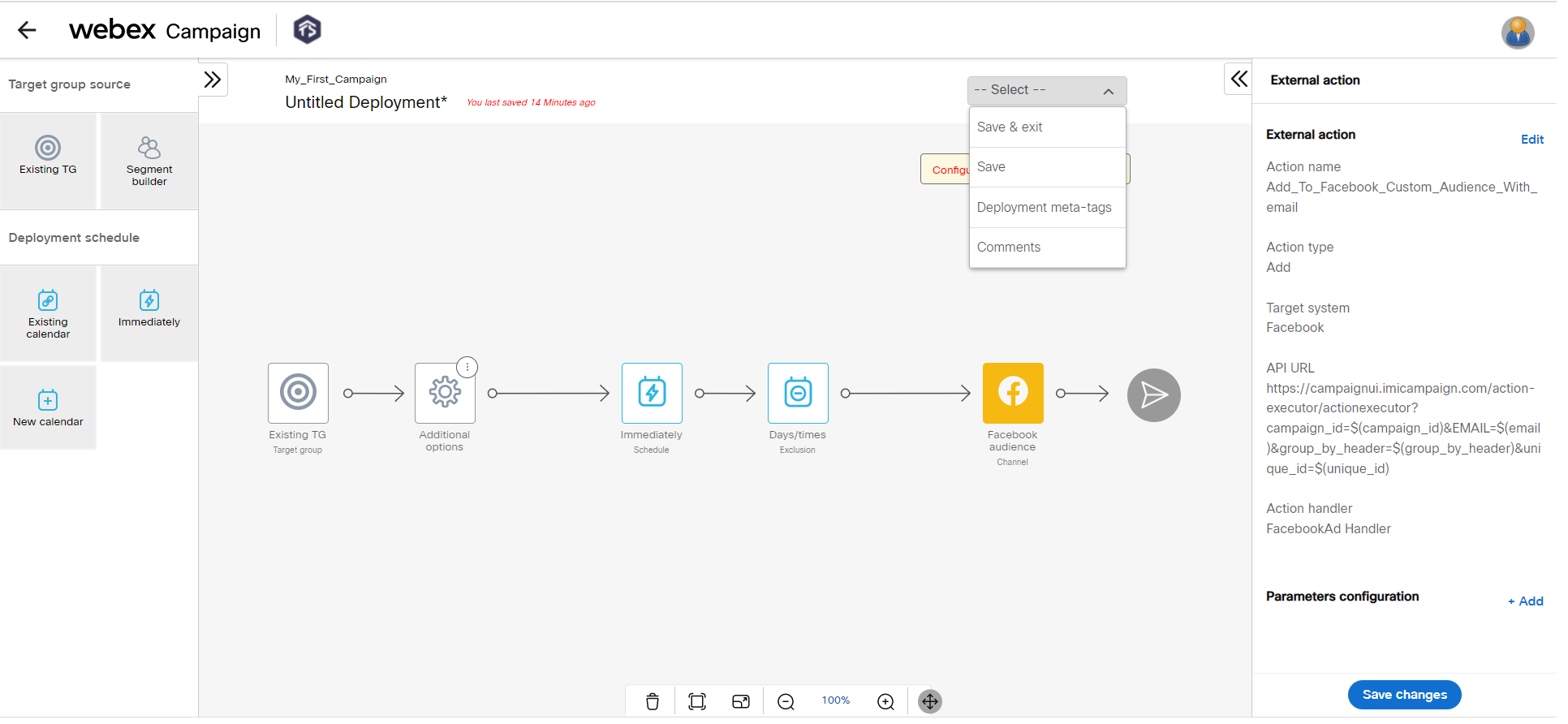
- Enter a name for the Deployment such as My_First_Deployment.
- Select a P&L to which you want to associate this deployment.
- Select one or more purposes from the Purpose drop-down.
- Enter a Deployment code and select Opt-out category.
- Click Save.
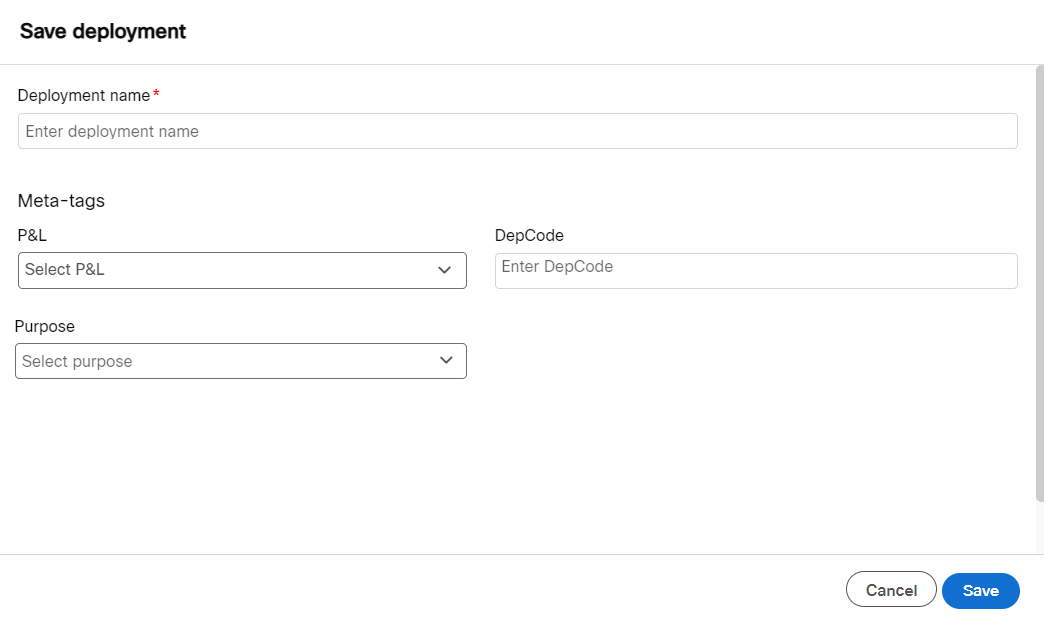
Now the deployment is ready for activation.
Step 7: Activate the Deployment
On the Campaign List screen, click the ellipses icon of the deployment and click Activate. You will receive notifications for various stages of the deployment.
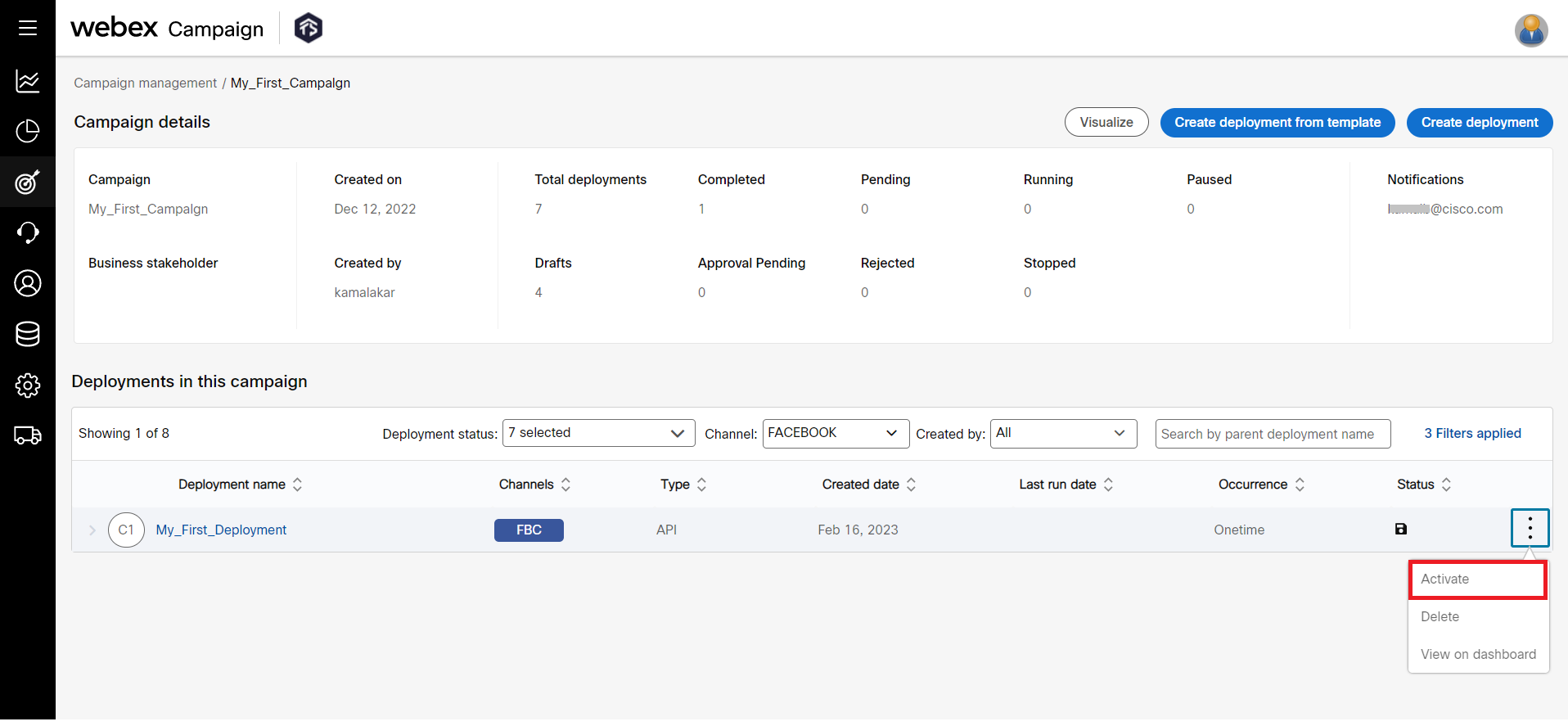
If the user does not have permission to approve their own created deployments, then instead of Activate button, you will notice Send for approval.
You can go to the Dashboard section to view the performance of your deployment.
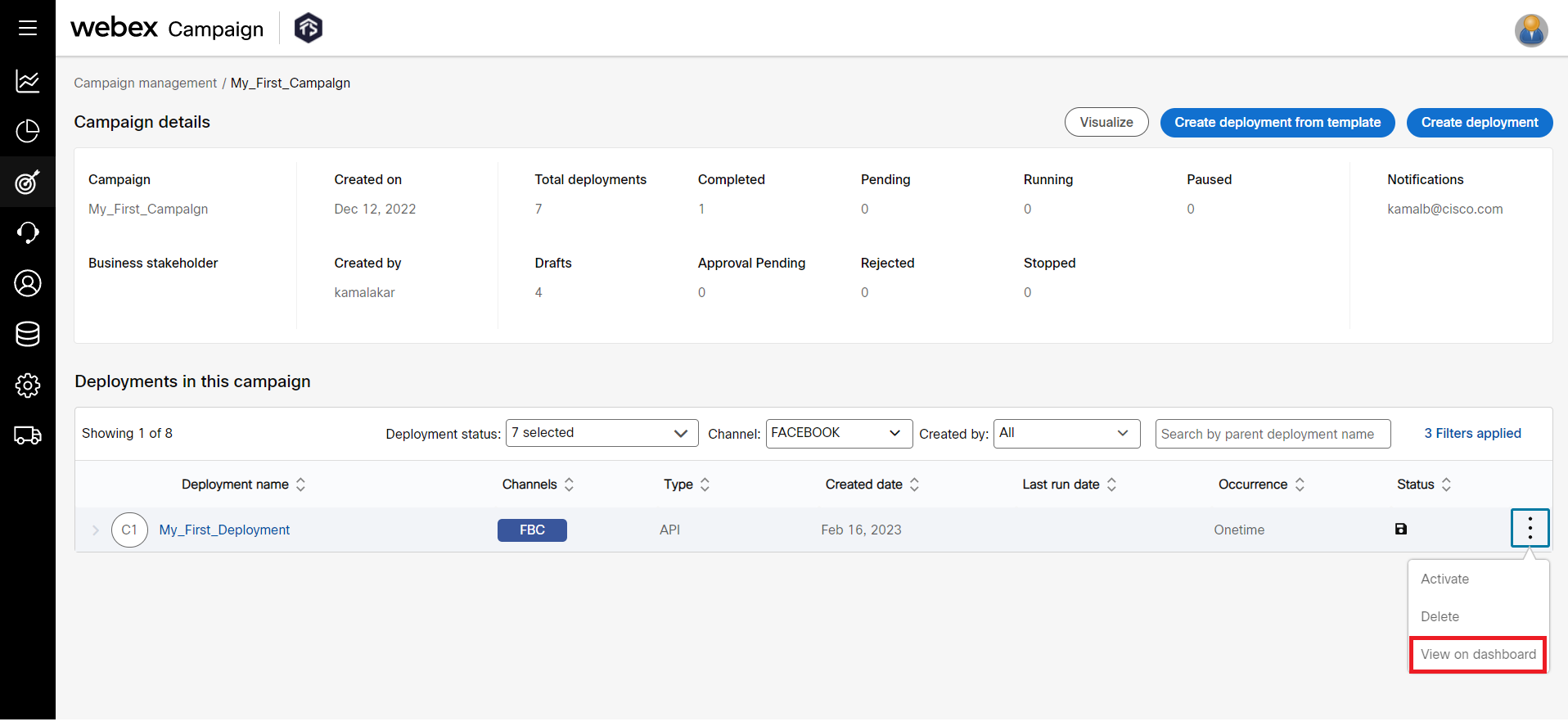
If you have questions, please contact your Webex Campaign account manager or Cisco Webex technical support team by phone or email:
- Europe / Middle East / Africa:
- Phone: +44 (0) 1494 750 600
- Email: [email protected]
- North America:
- Phone: +1-855-324-0970
- Email: [email protected]
Updated 4 days ago